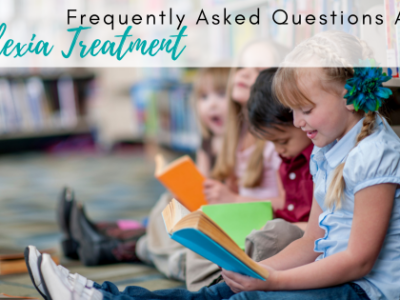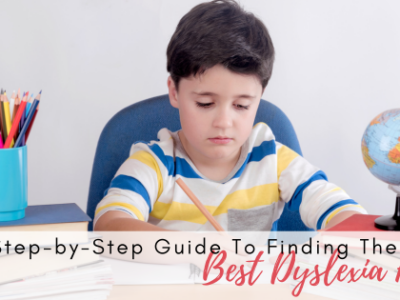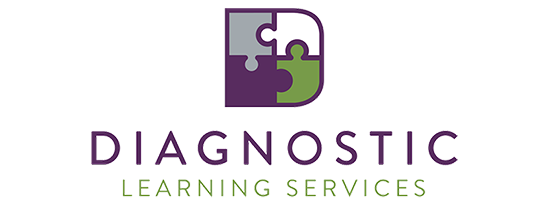The Emotional Impact of Dyslexia for Parents
When we receive a positive dyslexia diagnosis, things can feel so daunting to a parent. Often, you had a strong “mama gut” that something was wrong, but once it is confirmed, it often takes some getting used to and moments of panic as we come to terms with it. Any more often than not, since dyslexia is highly genetic, we might even recognize that we had the same struggles as they did as a child and want to make a difference that much more for our child as a result.
As parents, it is our job to worry. But when we hear that our child has something that could in any way make life harder for them, it crushes us because we want to be able to fix it and take that away for them. A rush of panic often comes over us and a flood of questions: will they be successful; can we fix this? Will they have a normal future? How do I explain this to my child? How can I change the outcome? Who can I talk to and find answers? Once you talk to the school district, often times, that list of questions grows even longer and feels more daunting. Most parents are left feeling like a deer in headlights.
I feel like this is such a pertinent topic to discuss, because during this situation, as parents, we are busy looking for answers to how to help our child, but nothing references how we can help the emotions we are struggling with as parents. In fact, the social emotional part of dyslexia can be just as impactful to both children and parents alike. It is important that we don’t ignore our feelings of concern about the diagnosis, though. Our children look to us for guidance and strength in uncertainty, so we need to address these feelings within us first! Its is the old oxygen mask on yourself before your child approach.
Anxiety is based in the feeling of uncertainty. We have fear about the new dyslexia diagnosis because we feel uneducated and ill-equipped to know how to take the next step and what information sources to trust. If we target the sources of concern, we can most likely address them head on and quickly.
Here are some great places to start to make your feel like you’re grounded in information and proper knowledge.
Step 1: Gain Empowerment: Understand How to Handle the Public-School System.
This one can be a DOOZY. It truthfully is an ENTIRE blog series on it’s own.
Can I trust the schools and what they are telling me? Do they have my child’s best interest at heart? Can they provide my child with the best level of help to make the biggest impact? Do I have any power to disagree with what the school is telling me? Do I have a say in ANY of this? I am here to tell you that the answer can vary campus to campus, district to district, and state to state.
Always start by learning your rights as a parent and as an advocate for your child. In most states, dyslexia falls under the Special Education umbrella, and therefore, your child will be covered under the Individuals with Disabilities in Education Act (IDEA). As a parent of a student in special education, you have a lot more power than you are often lead to believe or feel. Remember that. But as a parent of a student with dyslexia in some states, you can sometimes be at a disadvantage because dyslexia isn’t defined and it doesn’t tell states how to address it. That is why some states have stepped in and created dyslexia specific laws. By providing more detail than IDEA, these laws give students with dyslexia added rights and protections and to regularize what their schools do. To learn if you state does have dyslexia regulation and/or a handbook such as the one issued in Texas, contact your state’s department of education. Also, NESSY has a brilliant chart summarizing Dyslexia Legislation by State: https://www.nessy.com/us/state-dyslexia-legislation/.
Sometimes, in states like Texas, this is all lined out for you in a clear and concise, 171 page document for your reading pleasure. The Dyslexia Handbook, published by the Texas Education Agency, references all procedures concerning dyslexia and related disorders. It lays out a parent’s rights, and the steps through which to achieve action. https://preview.tinyurl.com/y3zdwhyh
Finally, the International Dyslexia Association has a fabulous article on Advocating for Students with Dyslexia. It lines out all the steps in the Special Education system and your rights as a parent. https://tinyurl.com/y9es968m. Please recognize that, although it SHOULD always be handled under Special Education, some states classify dyslexia under Section 504 of the Rehabilitation Act. These children do not have the same procedural safeguards or protections as students under IDEA. But that is an entire other blog post ENTIRELY.
Step 2: Connect to others in your same boat.
By this point, I am sure that you have already heard that one in 5 individuals worldwide are impacted by dyslexia. That means that there are a LOT of you out there feeling all the feels about how this is affecting you or your children personally and fighting the same battles as you for advocacy and support. You are not alone!!!!! The easiest and most immediate solution is to find a Facebook support group! Talk about immediate gratification! If you can find one specifically in your immediate area, that is even better! You can have instant access to parents, possibly at your same school, who may currently be climbing the same hill with you. And if you don’t find one, start one! Be the change you wish to see! With a little effort, you will find what you are looking for and become a leader in your community. If you want to wider your area, try Decoding Dyslexia. This national organization has tons of state chapters and considers themselves a Parent-Led Grassroots Movement for Dyslexia. This is a large advocacy group and no better way to connect to parents and stay informed all at the same time.
Step 3: Talk to Your Child
If you are questioning how to discuss a positive dyslexia diagnosis with your child, I can promise you that your child has already personally experienced difficulty with reading and spelling in comparison with their peers. Depending on their age and grade level, this may have been going on for a long time and they have been secretly masking their struggles for years. A dyslexia diagnosis may actually come as a relief and an answer.
The most important thing to explain to your child is that nothing is wrong with their brain. Their brain is just organized differently and they receive reading and spelling instruction in another way. I always explain to my student that the letters and sounds path in their brain, there is a gate that is locked. So we need to take a different route. The good news is that there are people who specialize in “the route”. I will address that more in the last step!
This isn’t a discussion of despair. In my opinion, dyslexic kids are the coolest little people around. They see things differently than I do and are so creative and perceptive! There is even a whole book about this, The Gift of Dyslexia, that can help explain this more. As a parent, your job is to just buff your child up and give them hope and an answer. Remind them of the things that they are awesome at, that you’re there to walk the journey with them, and that everything will be alright…because it will! Finally, keep the conversation going. Revisit this topic early and often, even if they seem hesitant to talk. They need you to help them but words to their emotions and know there is a place to turn to talk about what they have been experiencing.
Step 4: Find Real Help
Dyslexia can’t be cured. It is a neurological lifelong learning difference based in a different brain organization. But with appropriate instruction, students may rewire parts of their brain to access the written code and become proficient readers. It is pretty amazing stuff.
But this rewiring can only – truly – come with the help of a highly trained professional called a Certified Academic Language Therapist (CALT). A CALT is the only level of dyslexia professional certified to deliver a systematic course of dyslexia therapy where they literally “retrain the brain” in all the rules of phonics for spelling and reading. They are the “route masters” I referred to in the last section. Some schools have them, but most do not. When you ask questions at your school, ask specifically about whether or not they have a CALT on staff. If not, you can always find on at https://altaread.org/. You can also ALWAYS find access to a CALT virtually for your at Dyslexia On Demand https://dyslexiaondemand.com/.
Links to more resources:
Center for Parent Information and Resources: http://www.parentcenterhub.org
Council of Parent Attorneys and Advocates: http://www.copaa.org
Decoding Dyslexia: http://www.decodingdyslexia.net
National Center for Learning Disabilities: http://www.ncld.org
Center for Appropriate Dispute Resolution in Special Education: http://www.cadreworks.org/
National Center on Improving Literacy: https://improvingliteracy.org
Understood: https://www.understood.org
U.S. Department of Education IDEA: http://idea.ed.gov
U.S. Department of Education 2015 Dear Colleague memo: https://www2.ed.gov/policy/speced/guid/idea/memosdcltrs/guidance-on-dyslexia-10-2015.pdf
Wrightslaw (special education law and advocacy): http://wrightslaw.com







